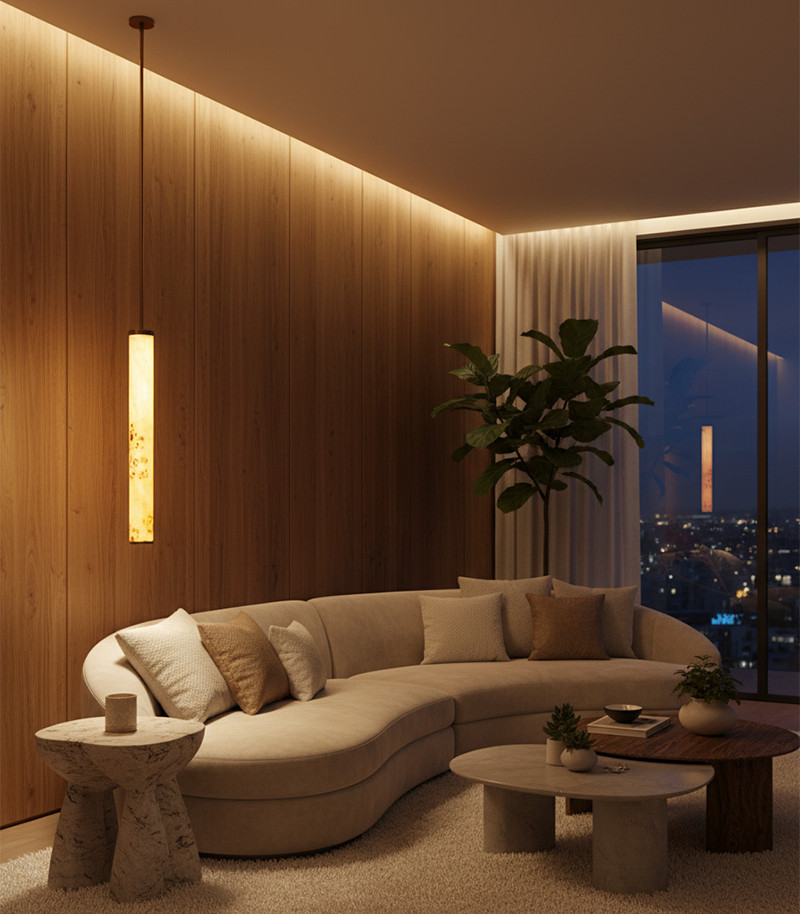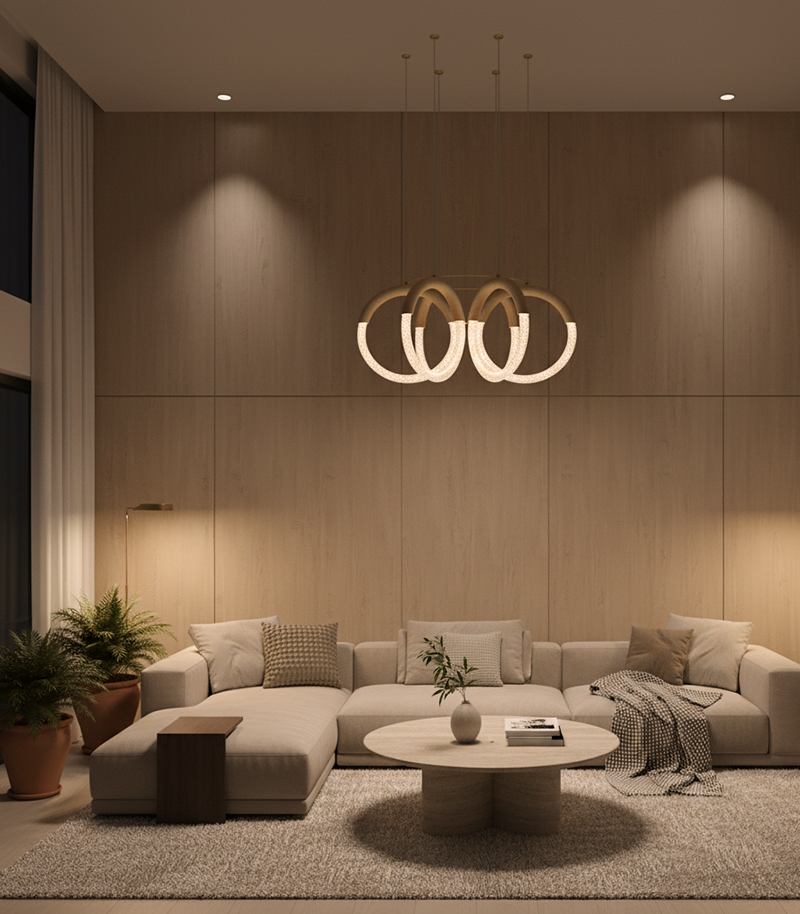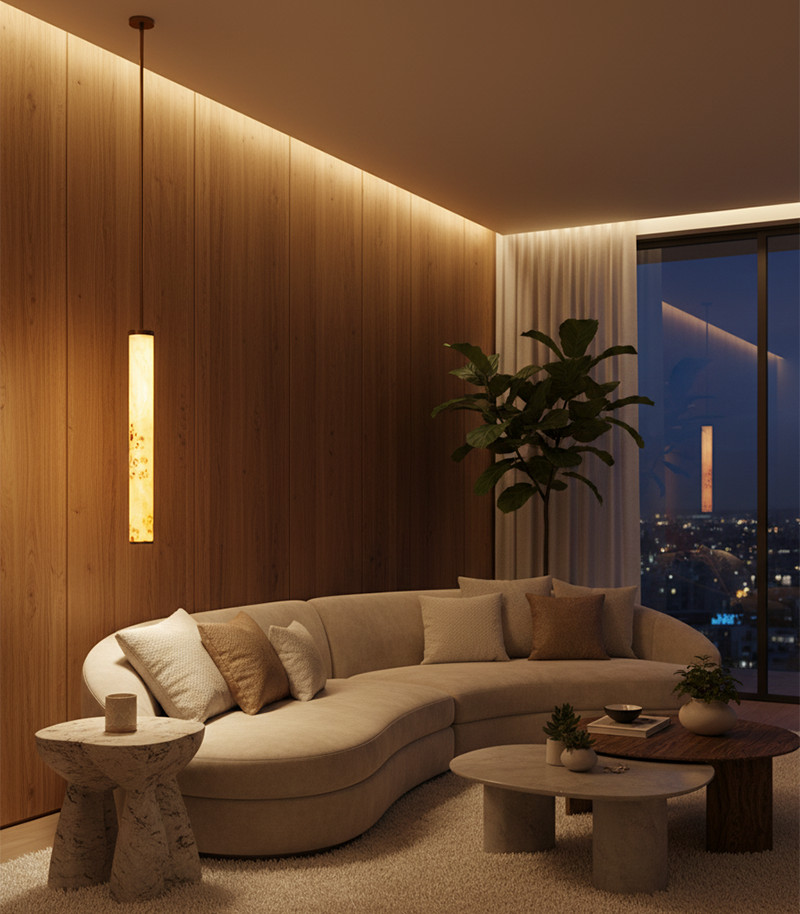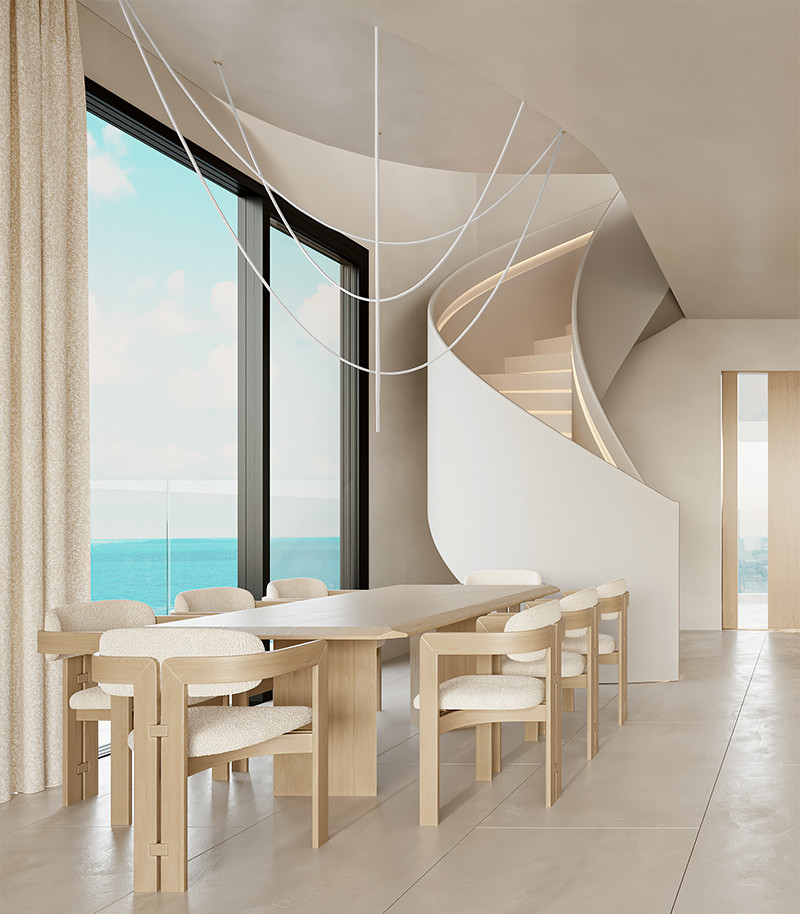Lighting: Sleep, Relaxation, and Circadian Rhythm

Lighting plays a far greater role than simply brightening a space—it has a powerful influence on mood, sleep quality, and your body’s natural circadian rhythm. Choosing the right pendant lights or chandeliers can either calm your mind and support rest, or unintentionally disrupt your sleep cycle.
Understanding Circadian Rhythm and Light
Your circadian rhythm acts as the body’s internal clock, guiding when to wake, when to feel energized, and when to wind down for sleep. Daylight is the most powerful regulator of this cycle. Exposure to bright, cool light during the day signals alertness, while softer, warm-toned light at night triggers melatonin, preparing the body for rest.
Artificial lighting can mimic or interfere with this rhythm. Bright, cold lighting in the evening—such as the wrong type of pendant lamp or chandelier—can trick your brain into staying awake. By contrast, a pendant light for bedroom spaces with warm tones (around 2700K) helps nurture your natural sleep rhythm.
Creating Relaxing Interiors with Pendant Lighting
For a soothing environment, consider pendant lights made from natural materials. A pendant light timber design adds warmth, texture, and a handcrafted feel, diffusing light softly through wood grains or veneers.
Take the Serenitti pendant—its handcrafted veneer surface glows with a sunset-inspired warmth, making it an ideal pendant light for bedroom and living area where rest and relaxation are a priority. This pendant light, designed and handcrafted in Australia by D.Bianco, is not only functional but also a sculptural statement that enhances wellbeing. In bedrooms: A pendant light for bedroom use should have dimmable warm tones to support melatonin production and relaxation.
The Role of Chandeliers in Relaxation and Interior
While pendant lights bring intimacy and practicality, chandeliers provide elegance and atmosphere. A modern chandelier crafted from materials like timber and brass delivers both statement design and soothing ambience.
For example, the Stella chandelier blends natural timber and brass into a sculptural form with concealed LEDs. Its soft, diffused glow through braided fabric transforms dining and living areas into calming, restorative spaces—perfect for unwinding after a busy day.

Lighting for Relaxation vs. Stimulation
-
Cool, bright light (3000K or more) - boosts alertness, best for daytime and workspaces.
-
Warm, dimmed light (2700K or less) - signals restfulness, best for bedrooms, dining and living rooms, and evening use.
Choosing the Right Fixtures for Each Room
- Design with purpose by selecting lighting that matches both activity and mood:
- Kitchen: Adjustable pendant lights timber or brass for brightness when cooking, warmth when entertaining.
- Dining Room: A warm pendant light fosters an inviting dining atmosphere.
- Living Room: A chandelier or modern pendant adapts from entertaining brightness to cozy evenings.
- Hallways: Subtle, warm lighting prevents overstimulation while keeping spaces welcoming.
- Bedroom: Always choose a pendant light for bedroom use that encourages relaxation and sleep.
Final Thoughts
Lighting has a profound yet often underestimated influence on wellbeing. From a pendant light for bedroom relaxation to timber pendant lights, the right fixtures support circadian rhythm, mood, and restful sleep.
By selecting warm, dimmable pendant lights and sculptural chandeliers, you can create interiors that are not only visually stunning but also enhance health and quality of life.



